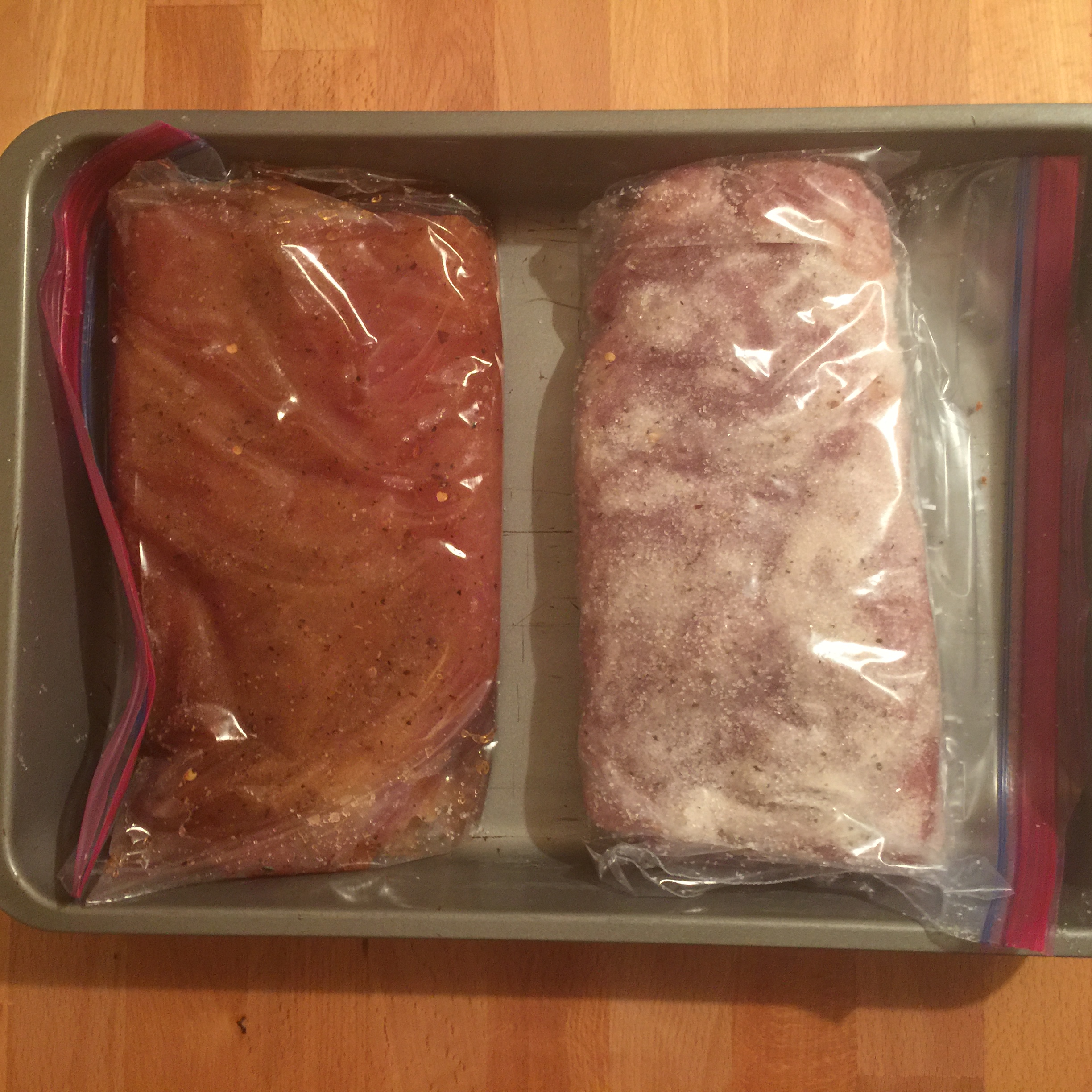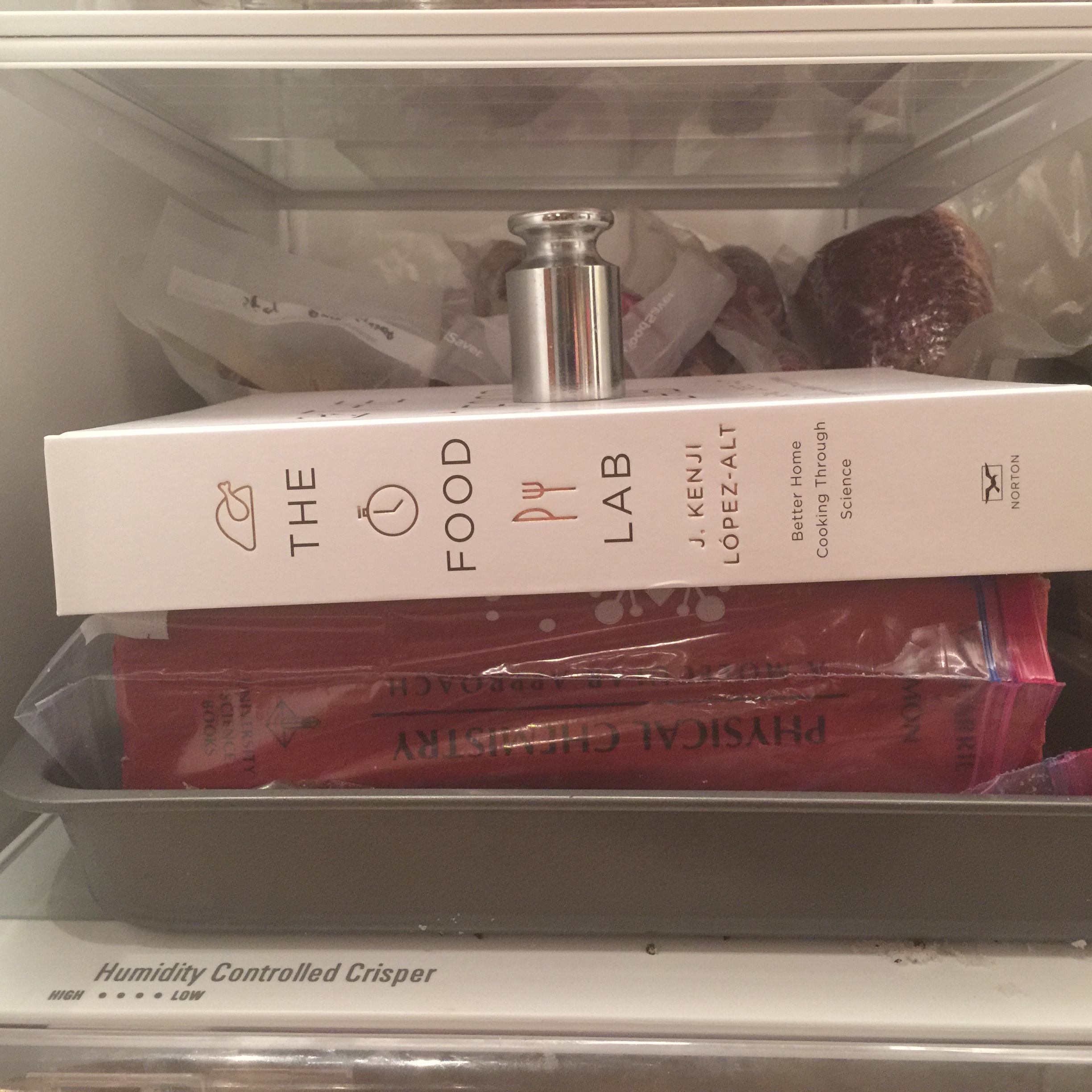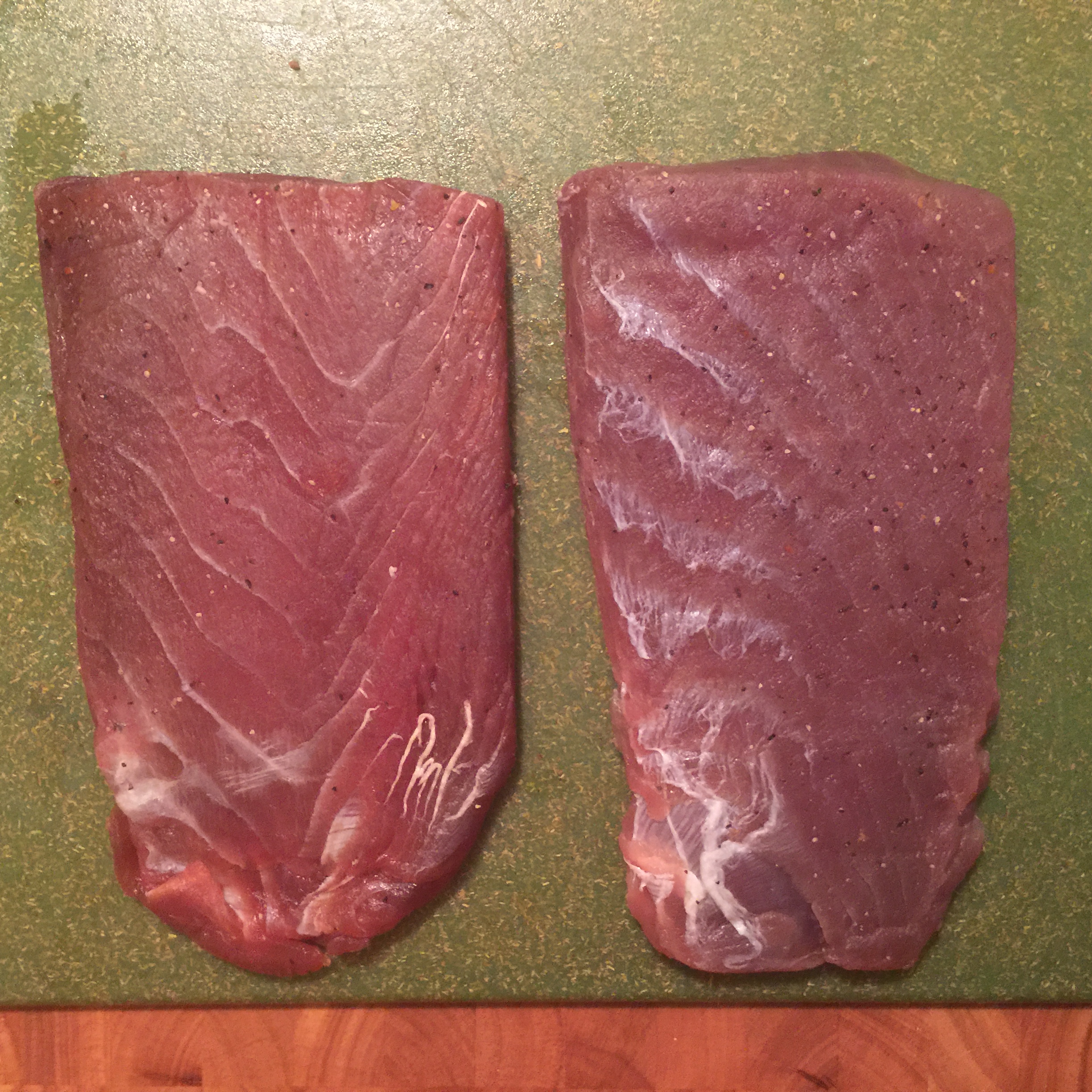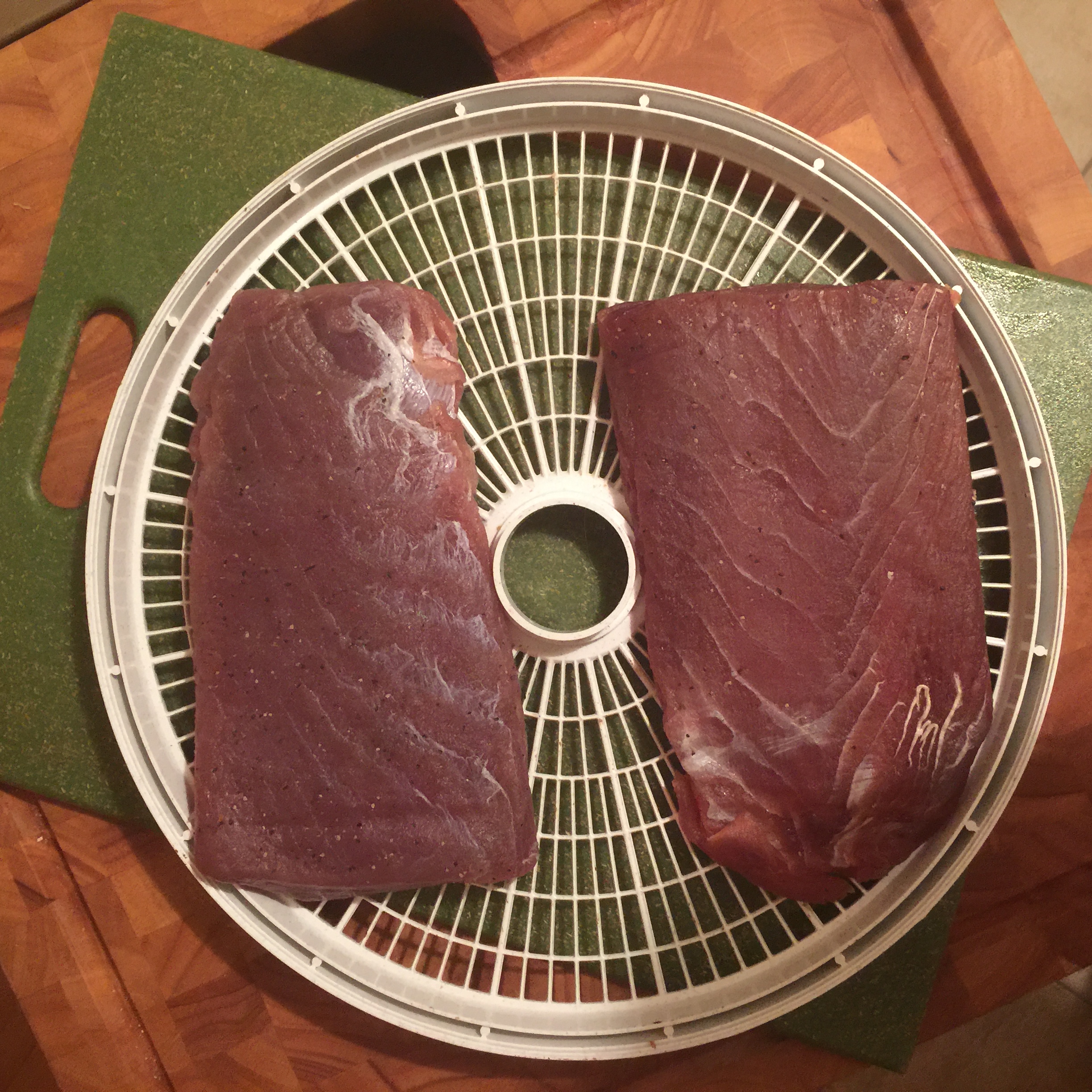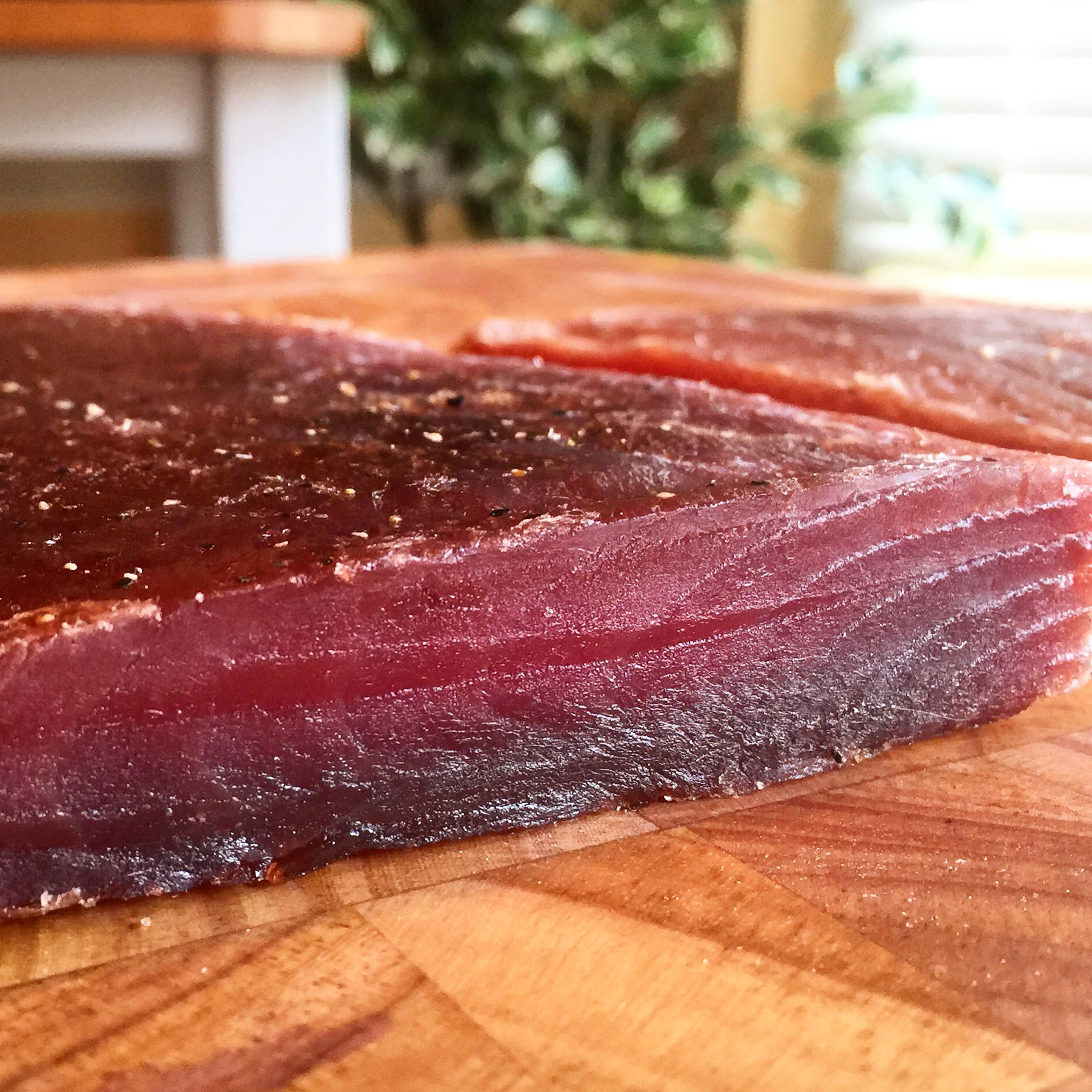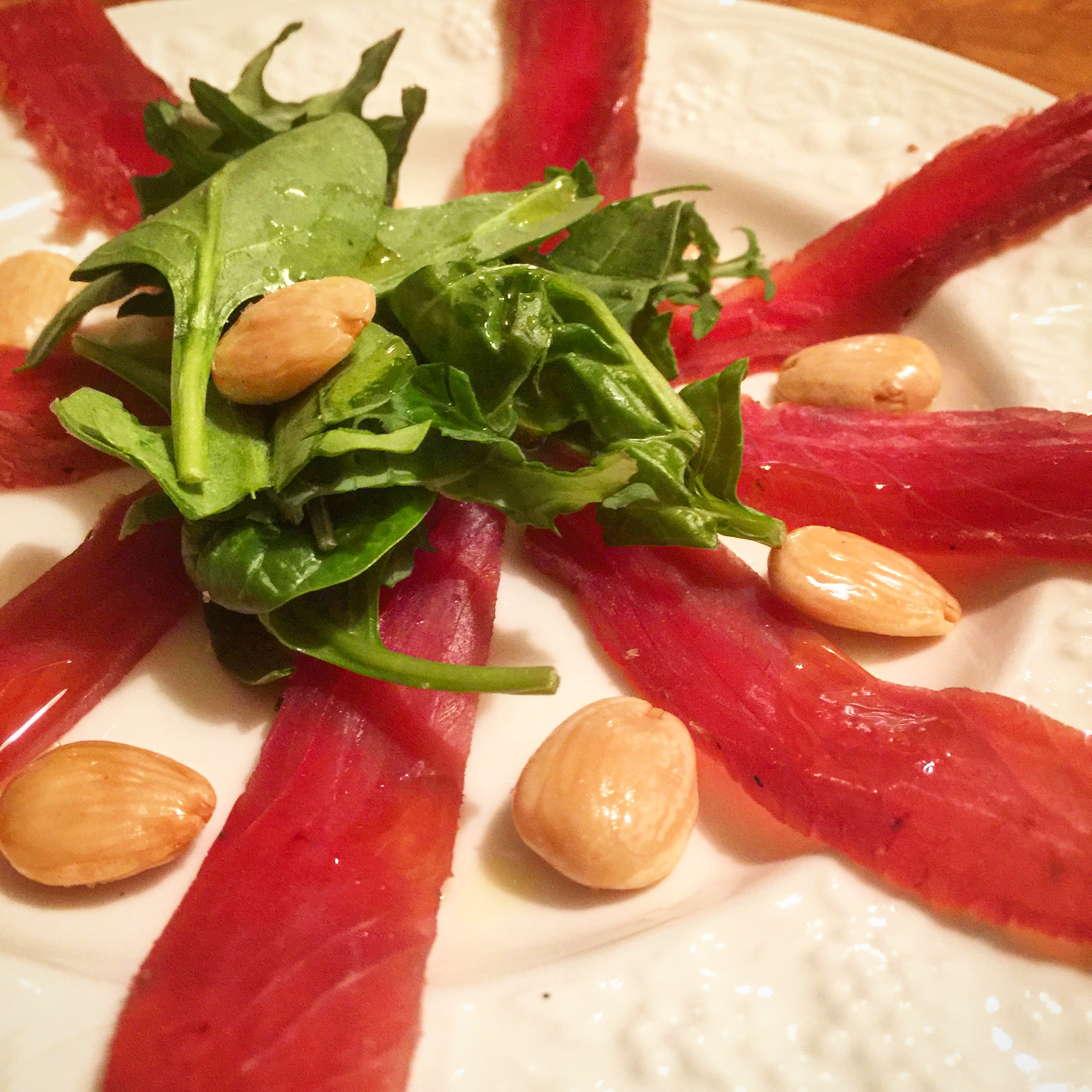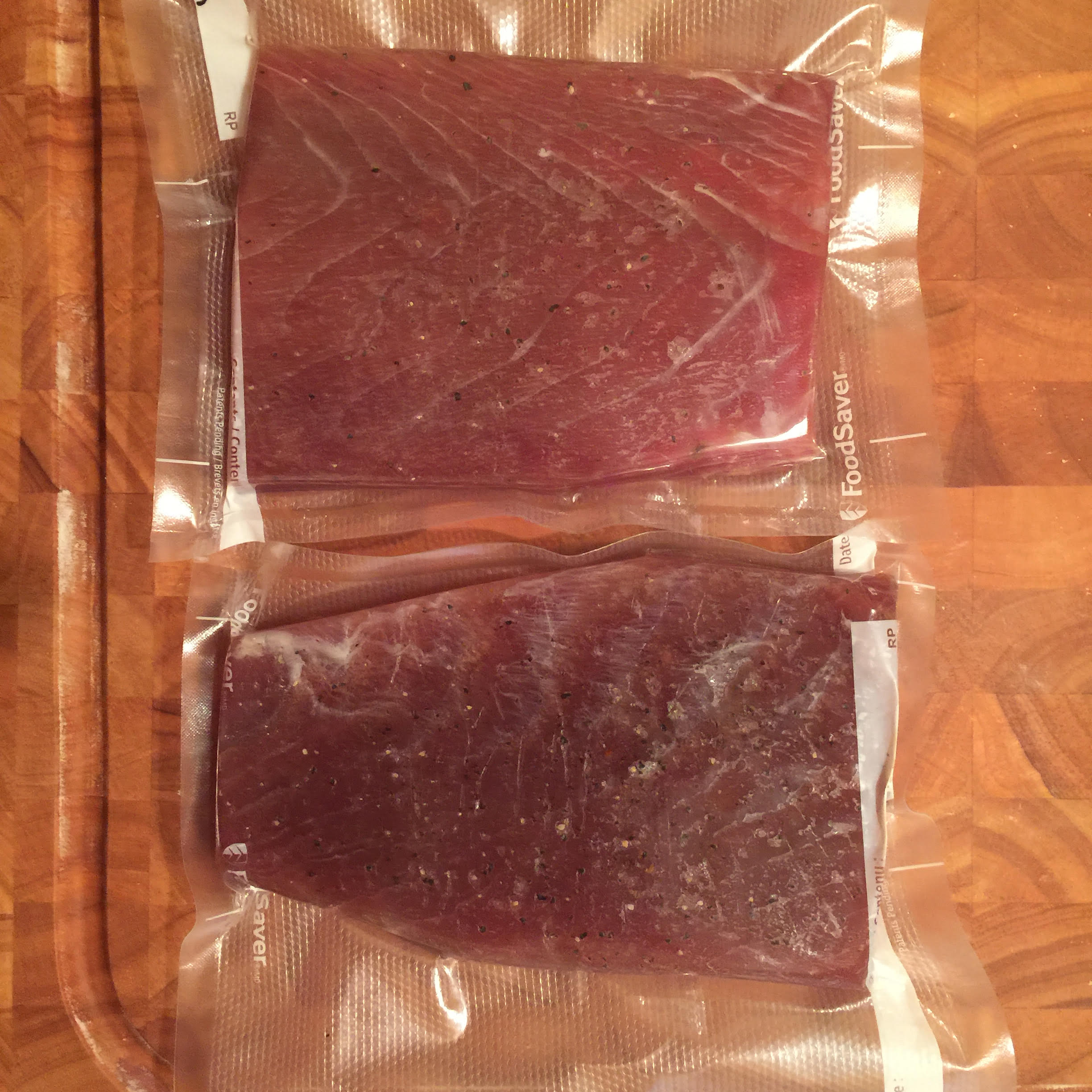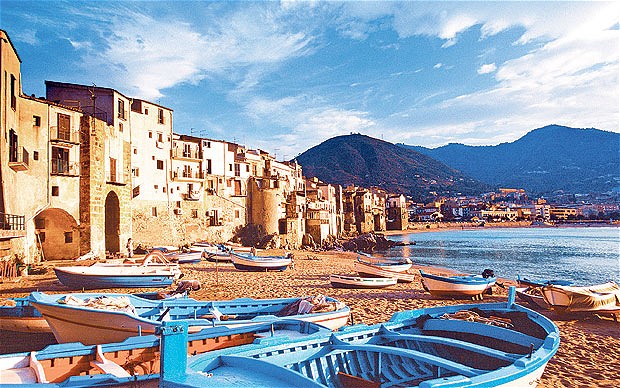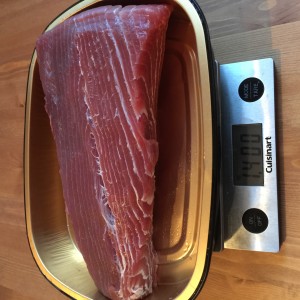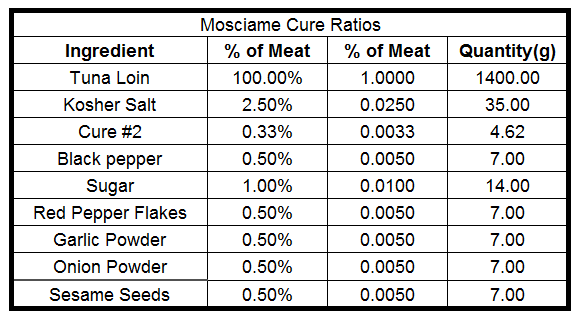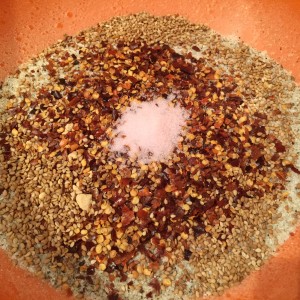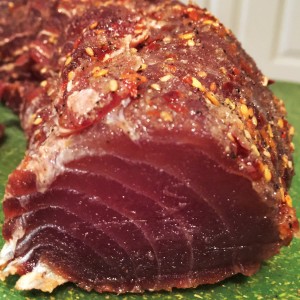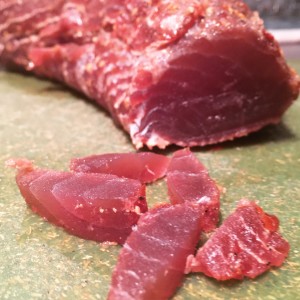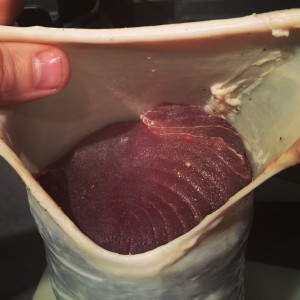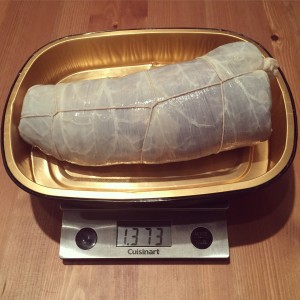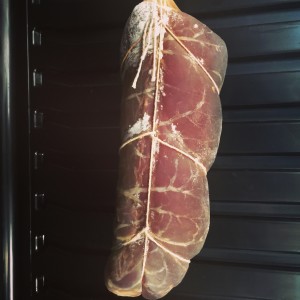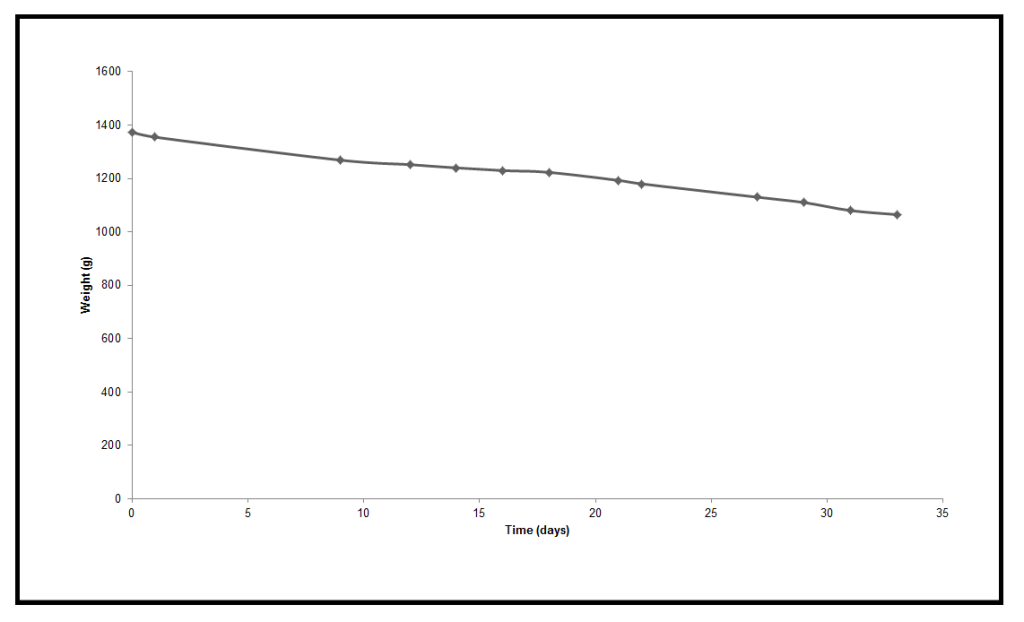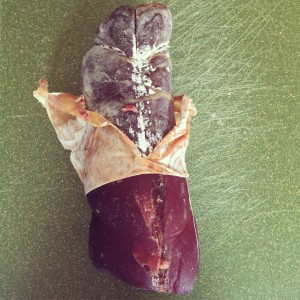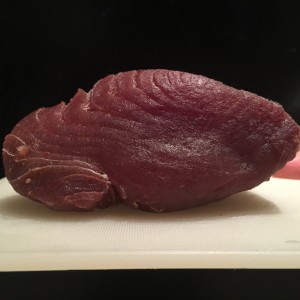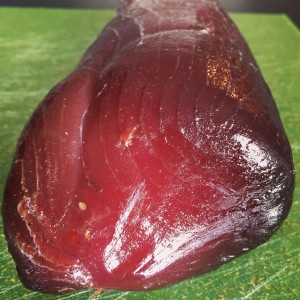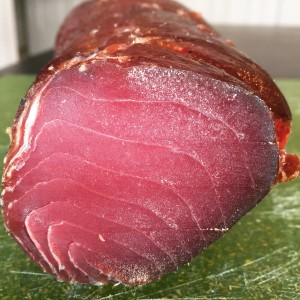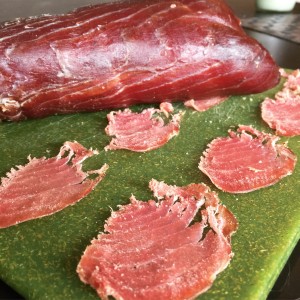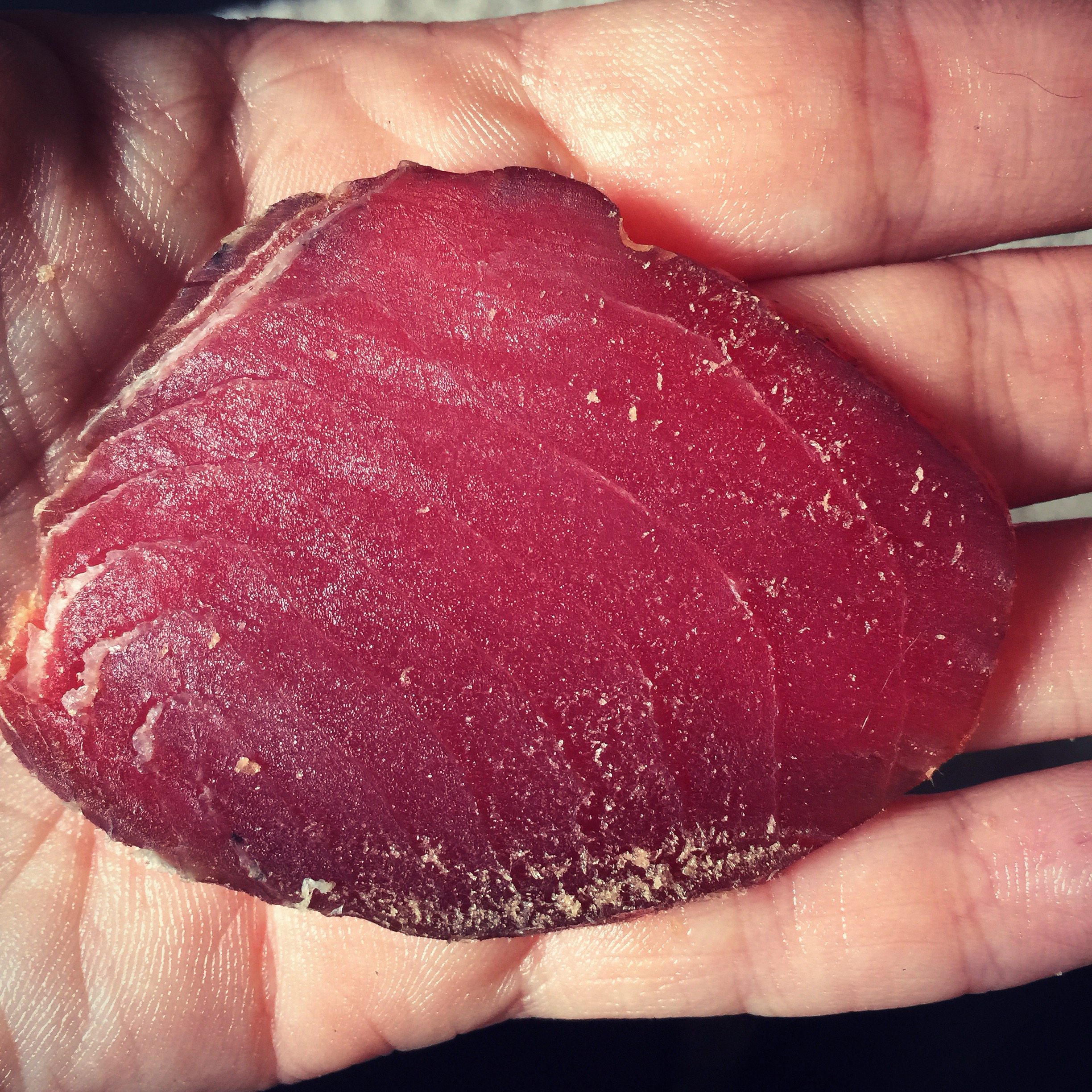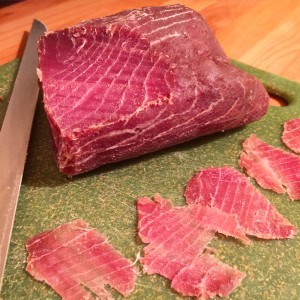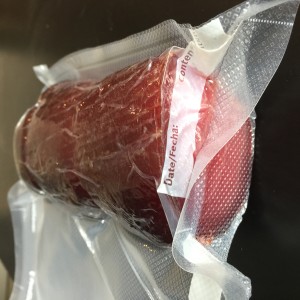There are traditional and more modern ways to create charcuterie products. Traditional methods may rely on the use of caves or more natural spaces that have the ideal humidity and temperature in order to allow the cured products to dry over time. Modern methods tend to use curing chambers to recreate these nature environments. You can see more about curing chamber instructions here and here.
I have previously discussed the history behind making mosciame and my first attempt at doing it in a curing chamber here. I have since perfected this method, as described here.
Here, I will discuss what I call the traditional modern method. Today, amidst concerns of pollution, instead of leaving their meat to air dry outside, some Italians use an oven at around 77-86 F for 4-6 hours to dry the meat. It can be pressed into a uniform shape if desired, and can be stored in olive oil.
I decided to try this method with a beautiful piece of sushi grade tuna.
Curing (48 hours):
I cut the piece of tuna in half, and placed them in two different excess cures; simple and soy maple.
I allowed the fish to cure for 48 hours while being pressed.
After 48 hours, I removed it from the cure and rinsed it off.
Drying (7 hours):
Temperature: 35C/95F
I placed it in the dehydrator at 35C for 7 hours.
After this time, the mosciame lost ~30% of its initial weight.
I removed it from the dehydrator and brushed it with olive oil.
Tasting:
I sliced it thin, and served it two ways:
It was awesome. Way better than I expected from a dehydrator method. I am a fan of the slow curing process, but this definitely created a delicious final product that is worth trying if you don’t have access to a curing chamber or want something a bit quicker.
Stored in a vacuum sealed bag, it awaits more tastings in the future.
Disclaimer: Curing fish is a hobby that comes with inherent risks. We can all do things to limit this risk by educating ourselves about the process and the utilizing the safest known methods to create our products. This website is for educational purposes only, and all experimentation should be done at each individuals own risk.

